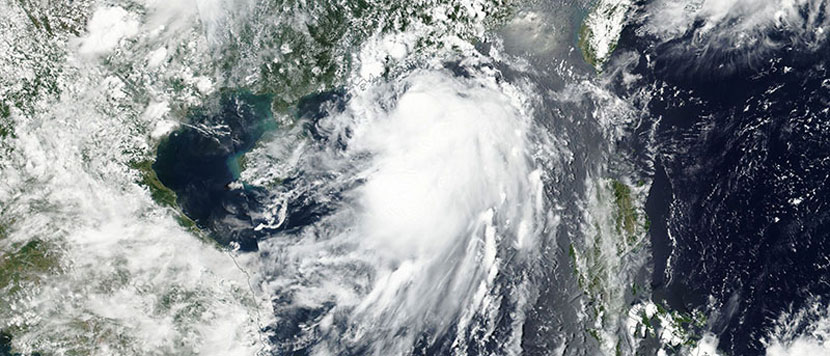Wednesday, August 14, 2024 Tropical Storm Ernesto , currently swirling through the Caribbean Sea, is on the cusp of becoming a hurricane. The storm’s intensifying winds and severe weather conditions are prompting widespread alerts and preparations across Puerto Rico and the Virgin Islands. As of 2:30 PM on August 14, Ernesto was located near 19.
5°N, 66.5°W, with maximum sustained winds of 60 knots (approximately 111 km/h), just shy of hurricane strength. The storm is moving northwest at 14 knots, according to the National Hurricane Center (NHC) and Central Pacific Hurricane Center (CPC) of NOAA.

Severe Weather Forecast Forecasters predict Ernesto will rapidly intensify into a hurricane within the next 12 hours. The storm’s rapid strengthening could see its winds reach up to 185 km/h, potentially escalating into a Category 1 hurricane. This intensification could bring life-threatening conditions, including significant storm surge and heavy rainfall.
Puerto Rico and the Virgin Islands are expected to experience dangerous weather, including heavy rainfall leading to flash floods and mudslides. The storm’s swells are anticipated to create life-threatening surf and rip currents across various Caribbean destinations, including the Dominican Republic, Turks and Caicos, and the Bahamas. Coastal areas are advised to remain vigilant.
The storm’s exact path remains uncertain, but there is a potential risk for Bermuda later in the week. Ernesto’s movement could also impact the US east coast, with dangerous rip currents expected even if the storm remains offshore. Airport Closures and Flight Disruptions In response to the impending storm, Princess Juliana International Airport (PJIA) in Sint Maarten will be temporarily closed starting from 10 AM on August 13.
The closure extends through August 14, with operations expected to resume on August 15 at 7 AM. The decision aims to ensure the safety of passengers, staff, and airline personnel. Travelers are advised to contact their airlines directly for updates on flights.
Flight cancellations and delays have already begun impacting airports in the affected regions. Luis Munoz Marin International Airport in San Juan, Puerto Rico, has seen significant disruptions. As of the latest reports, there have been 32 flight cancellations and 28 delays at this airport alone, as tracked by FlightRadar24.
Major airlines affected include American Airlines, Delta Air Lines, and United Airlines. Other airports across the Caribbean are also experiencing disruptions. The storm’s impact has led to flight delays and cancellations at Cyril E.
King Airport in the Virgin Islands and Princess Juliana International Airport. Travelers are advised to check with their airlines for specific flight status updates and potential rebooking options. Emergency Preparations and Community Impact In Puerto Rico, the storm has already caused power outages affecting nearly 16,000 customers, with additional outages reported in the Virgin Islands.
The power grid, still vulnerable from the aftermath of Hurricane Maria in 2017, is expected to face further strain. Officials have closed schools and government offices, and residents are rushing to local grocery stores to stock up on essentials. Puerto Rico’s Department of Natural and Environmental Resources has been actively rescuing animals, including parrots, and relocating them to safe areas.
The Humane Society of Puerto Rico is also urging residents to temporarily care for pets to prevent potential flooding at shelters. Climate Impact and Future Outlook Ernesto is the fifth named storm of the 2024 Atlantic hurricane season, which has been predicted to be “above-normal.” This year’s forecast includes 17 to 25 named storms, 8 to 13 hurricanes, and 4 to 7 major hurricanes.
Record-high ocean temperatures, linked to the climate crisis, are driving the increased storm activity. The 2024 season is expected to surpass the record-setting temperatures of 2023, contributing to the heightened hurricane activity. As Ernesto continues to develop, residents and travelers across the Caribbean and potentially the eastern US coast should stay informed through local weather services and be prepared for rapidly changing conditions.
The NHC and meteorologists advise continuous monitoring and readiness for emergency responses..



















